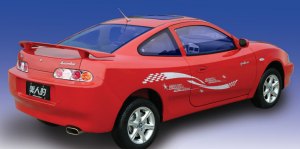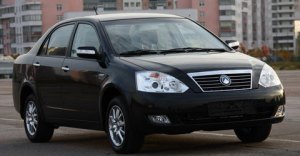
| Volvo (Sweden) |
| Lotus (UK) - 51% |
| Proton (Malaysia) - 49.9% |
| Shanghai
LTI (China) - 51% (produces London Taxis) |
| Aston Martin - 7.6% |
R&D center: Linhai
Main assembly plants: Ningbo (Free Cruiser, EC7), Luqiao (Kingkong, SC5, SC6), Linhai (Panda, GX2), Xiangtan (Vision, SC7, GC7), Chengdu (GX7, GX9), Jinan (EC8), Lanzhou (Free Cruiser, SC3).
2021: 1,328,029 units (Lynk & Co: 220,516 units)
2020: 1,320,217 units (Lynk & Co: 175,456 units)
2019: 1,361,560 units (Lynk & Co: 128,606 units)
2018: 1,500,838 units (Lynk & Co: 120,414 units)
2017: 1,247,116 units
2016: 765,851 units
2015: 509,863 units
2014: 417,851 units
2013: 549,468 units
2012: 483,483 units
2011: 421,611 units
2010: 415,843 units
2009: 326,710 units
2008: 204,205 units
2007: 181,517 units
2006: 164,495 units
2005: 133,041 units
2004: 96,693 units
2003: 76,274 units
2002: 47,800 units
2016 sales by model:
Panda: 7,178 units
Kingkong: 63,413 units
Vision: 137,687 units
Emgrand EC7: 240,962 units
Emgrand GL: 30,037 units
GC9: 51,828 units
GX7: 15,298 units
Vision SUV: 49,447 units
Emgrand GS: 60,521 units
Boyue: 109,209 units
TX4: 1,300 units
Reference:
http://www.geelyauto.com.hk/en/financial_statements.html
http://www.qqbenz.com/
http://www.qichexl.com/a/xiaoliangpaixing/
Apart from the Geely brand, it has created sub-brands Gleagle (dynamic brand), Emgrand (premium brand) and Englon (mainly produces London taxi). However, they helped little promoting the sales of its cars thus will be phased out by 2017. The smartest decision in recent years has to be the acquisition of Volvo, which not only contributes profit but also R&D power to Geely.
In 2003, Geely developed the first car by itself, Beauty Leopard. It was a 2+2 coupe whose odd appearance and poor performance contradicted with its name. However, history will remember that it was the first coupe developed by a Chinese manufacturer.
 Beauty Leopard (2003)
Beauty Leopard (2003)In order to raise its game, Geely hired Korean engineering consultants headed by Daewoo International (not Daewoo motors) to develop its next generation mass production models, Free Cruiser (2005) and King Kong (2006). They gradually replaced the cheap Daihatsu Charade-based models and lifted Geely to an independent car maker in its own right. Meanwhile, through technology transfer and acquisition, Geely got the know-how of building modern VVT engines and automatic transmission. By the late 2000s, it had basically established its own R&D capability.
 Vision (2007)
Vision (2007)Nevertheless, the fast progress was associated with criticisms that it copied others - its Vision sedan was clearly a clone to Toyota Corolla, while its GE luxury limousine was even a downsized version of Rolls-Royce Phantom. It would take some years to clean its image.
In 2010, Geely surprised the world by taking over Volvo from Ford. Volvo brought valuable expertise in design, engineering and quality control, which helped developing Geely's new global brand, Lynk&Co. In 2017, Geely added Lotus to its collection from the hands Proton.